Tuesday, 25 April 2017
| Room 312 |
13:45 - 15:45 |
Moderators: Michael Steckner, Douglas Kelley |
Slack Channel: #s_int_eng_safety
Session Number: O87
13:45
|
0476.
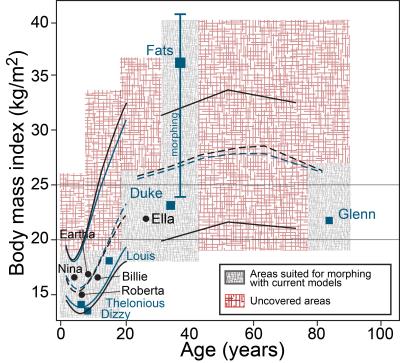 |
Morphing and Posing of Computational Anatomical Models: Enhanced Patient-Specific MRI RF Exposure Prediction 
Manuel Murbach, Bryn Lloyd, Esra Neufeld, Wolfgang Kainz, Niels Kuster
The current MRI safety standards for exposure to radiofrequency fields are conservative and intended to protect the entire patient population. Limits set on whole-body average specific absorption rate take the patient’s weight into consideration, which allows robust, but only very rudimentary patient-specific exposure estimation. The introduction of combined morphing and posing in computational anatomical human models will enable further improvements in the accuracy of in silicolocal exposure estimation. In this study, we developed refined morphing techniques and explored the benefits for estimating personalized radiofrequency absorption, which could substantially reduce the safety margins necessary for conservative assessment of radiofrequency exposure.
|
13:57
 |
0477.
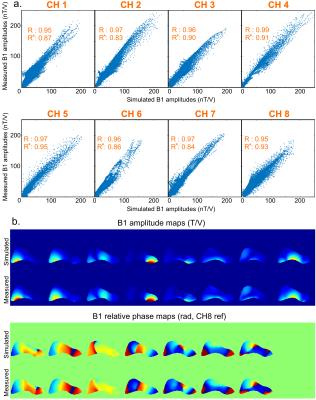 |
An 8Tx/8Rx coil validation workflow toward Virtual Observation Points-based parallel transmission cervical spinal cord in vivo imaging at 7T 
Aurélien Massire, Andreas Bitz, Nicolas Boulant, Dorothee Schüler, Tobias Wichmann , Thomas Troalen, Jean-Philippe Ranjeva, Virginie Callot
Parallel transmission is a cutting-edge asset to tackle RF field inhomogeneity or to realize inner volume selection for cervical spinal cord imaging at 7T. To perform VOP-based pTx in vivo exams with a dedicated 8Tx/8Rx coil the following workflow is proposed: 1) starting from electromagnetic simulations on generic human body models, Q-matrices sets were compressed with the VOP method. 2) B1+ mapping was performed on a phantom with known properties to validate these electromagnetic simulations by deriving calibration matrices, and initialize error propagations and further related safety margins. 3) MR thermometry was also performed to cross-check obtained results.
|
14:09
|
0478.
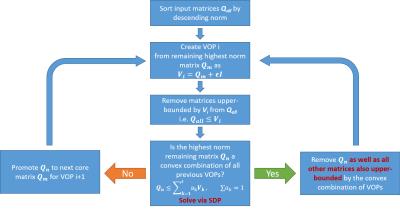 |
Massively accelerated VOP compression for population-scale RF safety models 
Andre Kuehne, Helmar Waiczies, Thoralf Niendorf
Generating high-accuracy VOP sets for safety assessment is hampered by long computation times. We present modifications to the generalized VOP algorithm, significantly increasing its compression capabilities and speed. The novel algorithm is validated and benchmarked on SAR and temperature matrices from nine different coil arrays.
|
14:21
 |
0479.
 |
A personalised SAR model for subject-specific RF safety 
Hongbae Jeong, Jesper Andersson, Aaron Hess, Peter Jezzard
In this study, we introduce a method to personalise SAR modelling by non-linear registration of a high-resolution reference voxel model into a target (subject-specific) head morphometry. We evaluate this by using two well characterised electromagnetic models, Duke and MIDA, by comparing MIDA-warped-into-Duke (MIKE), Duke and MIDA. Maps of 10g SAR across a range of B1+ shims were evaluated, showing improved agreement between the MIKE and Duke models, versus the native MIDA and Duke models. By employing personalised SAR models an increased confidence in EM simulation can be achieved.
|
14:33
|
0480.
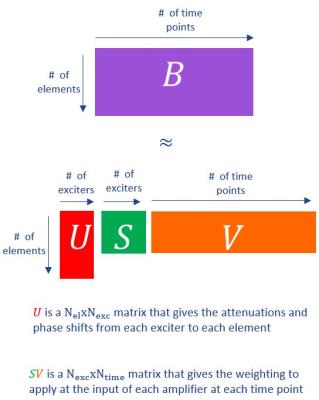 |
SAR-aware parallel transmit channel compression 
Mihir Pendse, Brian Rutt
We describe a new approach for performing channel compression for pTx in cases where the number of elements in the transmit coil exceeds the number of exciters. Unlike previous methods for channel compression, the current approach takes local SAR information into account and seeks to minimize SAR while obtaining a uniform flip angle distribution. We demonstrate mitigation of local SAR hotspots with the current approach and show 30% reduction in peak local SAR compared to a SAR unaware approach.
|
14:45
|
0481.
 |
A Hybrid model for calculation of Radio Frequency heating at the electrodes of an implanted neuro-stimulator. 
John Nyenhuis, Krishna Singhal, Peter Single
We present an efficient computational method to calculate the temperature rise during MRI of tissue surrounding the electrodes of an active implanted lead. Inputs to the model are transmission line parameters as derived from electrical tests on the lead and the calculated tangential electric-field along the length of the lead during MRI. The method was validated by comparing measured and calculated temperature rises at the electrodes of a neurostimulation lead in a phantom test. The distribution of temperature rise in the tissues surrounding the electrode array was calculated for a whole body SAR of 2 W/kg. The maximum temperature rise was 5.4oC, which is expected to be safe, but more work would be required to assess uncertainty in this determination.
|
14:57
 |
0482.
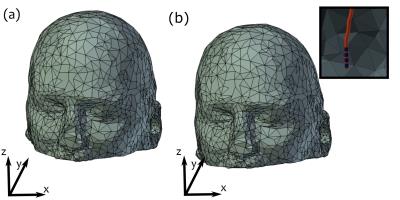 |
Low Heating B1 Mapping in Parallel Transmit for Deep Brain Stimulators 
Clare McElcheran, Laleh Golestanirad, Maria Iacono, Benson Yang, Kevan Anderson, Giorgio Bonmassar, Simon Graham
Deep brain stimulators and other elongated implants interact with the RF transmission fields used in MRI, potentially causing unsafe levels of localized tissue heating. It may be possible to suppress these heating effects using parallel RF transmission (pTx) methods, but a practical approach still remains to be implemented. Toward this goal, we present a method that combines intra-operative computed tomography (CT) data, electromagnetic simulations, and low-SAR B1-mapping to determine pTx input parameters for suppressing heating effects in DBS patients.
|
15:09
 |
0483.
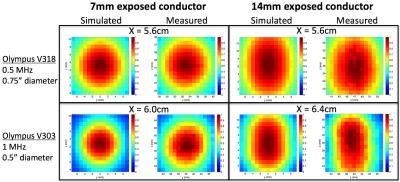 |
FDTD Simulation of Thermo-Acoustic Ultrasound for Detection of RF Tip Heating 
Neerav Dixit, Pascal Stang, John Pauly, Greig Scott
Thermo-acoustic ultrasound uses the acoustic waves generated by thermoelastic expansion to detect peaks in local SAR and could be used to assess the risk of RF heating for patients with implanted or interventional devices. We developed simulations to characterize the generation and propagation of thermo-acoustic waves from device lead tips, and we validated the simulations with experimental results. The simulations provide insight into the properties of thermo-acoustic signals and can aid in the development of a thermo-acoustic ultrasound system for the assessment of RF safety.
|
15:21
|
0484.
 |
Variation of RF heating around deep brain stimulation leads during 3.0 T MRI in fourteen patient-derived realistic lead models: The role of extracranial lead management 
Laleh Golestanirad, Julie Pilitsis, Alastair Martin, Paul Larson, Boris Keil, Giorgio Bonmassar, Lawrence Wald
Post-operative MRI of patients with deep brain stimulation (DBS) implants is useful to assess complications and diagnose comorbidities. More than one third of medical centers, however, do not perform MRI on this patient population due to safety risks. Almost nothing is known about the variation and extent of RF heating of DBS leads during MRI at higher fields (>1.5 T) in a real patient population. Here we report the results of SAR calculations around DBS leads in a cohort of fourteen realistic DBS lead geometries. We also present preliminary results of applying an intra-operative lead management technique to reduce SAR during 3.0 T MRI.
|
15:33
|
0485.
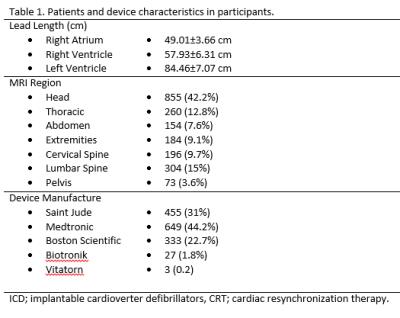 |
Specific Absorption Rate, dB/dt, and Device Parameters Following MRI of Patients with Implanted Cardiac Devices 
Amir Ali Rahsepar, Rozann Hansford, Michael Guttman, Valeria Castro, Diana McVeigh, Stefan Zimmermann, John Kirsch, Henry Halperin, Saman Nazarian
This large prospective study showed that the previously suggested SAR limit of 2 W/kg can be unduly restrictive. No other MRI characteristics appear to predict changes in device system parameters.
|
|












